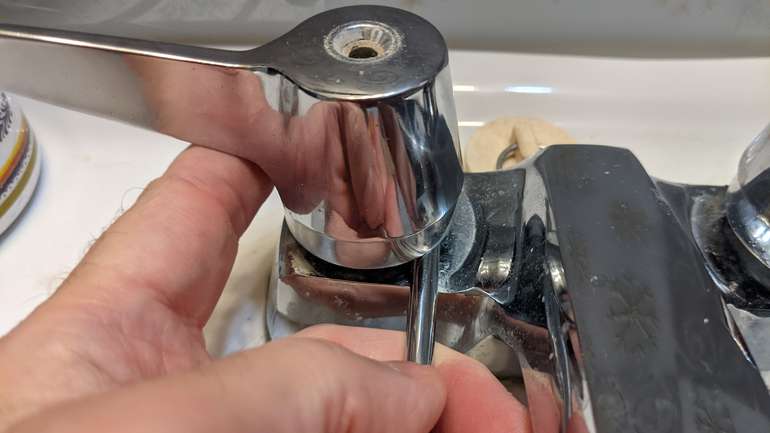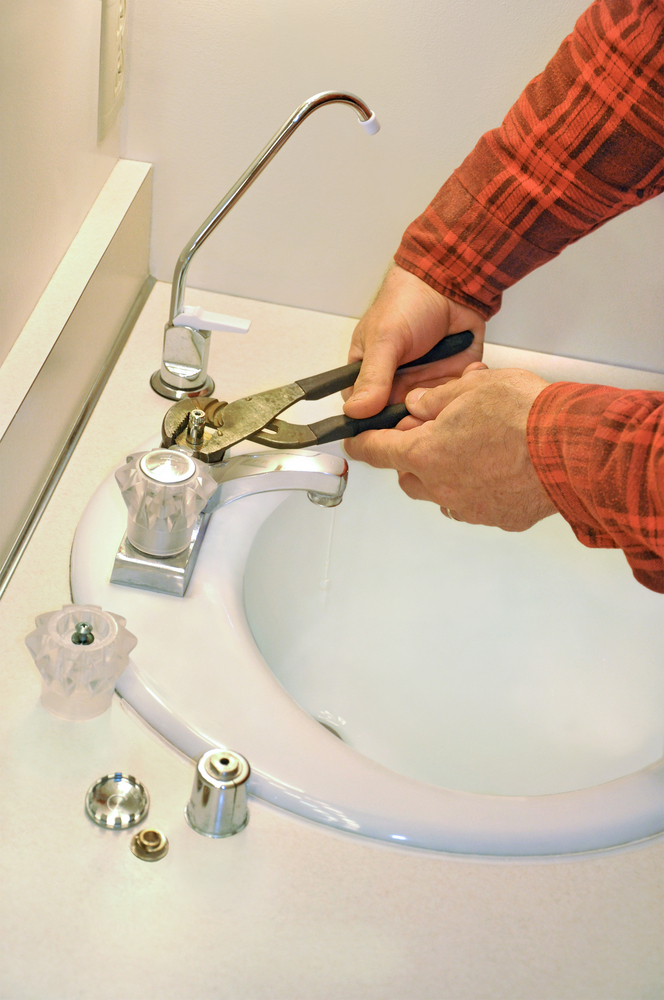Why It's Important to Repair a Broken Faucet
Why It's Important to Repair a Broken Faucet
Blog Article
Nearly everybody is bound to have their personal thoughts about Why It's Important to Fix Leaky Faucets.

Trickling faucets may seem like a minor trouble, but their effect exceeds simply the annoyance of the noise. From wasting water to incurring unnecessary monetary prices and wellness risks, disregarding a leaking tap can bring about numerous effects. In this article, we'll explore why it's vital to resolve this typical family problem without delay and successfully.
Wastefulness of Water
Environmental Influence
Dripping taps contribute significantly to water waste. According to the Environmental Protection Agency (EPA), a single tap trickling at one drip per secondly can waste greater than 3,000 gallons of water each year. This not only stress water sources yet also impacts ecosystems and wildlife based on them.
Financial Expenses
Boosted Water Costs
Past the ecological influence, trickling taps can blow up water costs considerably. The accumulated wastefulness with time converts right into higher utility expenses, which can have been stayed clear of with prompt repair services.
Prospective Residential Property Damages
Moreover, prolonged trickling can bring about harm to fixtures and surfaces surrounding the faucet. Water build-up can trigger discoloration, deterioration, and also structural problems if left ignored, causing added repair costs.
Health Issues
Mold and Mildew Growth
The constant presence of moisture from a dripping tap creates a perfect environment for mold and mold development. These fungi not only compromise interior air top quality however also pose wellness threats, specifically for individuals with respiratory problems or allergies.
Waterborne Diseases
Stationary water in leaking taps can end up being a breeding ground for microorganisms and other pathogens, increasing the danger of waterborne diseases. Pollutants such as Legionella bacteria prosper in stagnant water, possibly leading to severe diseases when consumed or inhaled.
DIY vs. Specialist Repair work
Benefits and drawbacks of DIY Fixing
While some might attempt to repair a trickling faucet themselves, DIY repair services come with their own collection of obstacles. Without proper knowledge and tools, DIY attempts can worsen the concern or bring about incomplete repairs, prolonging the problem.
Benefits of Hiring a Professional Plumber
Employing a professional plumber guarantees that the underlying reason for the trickling tap is attended to successfully. Plumbing professionals have the know-how and devices to diagnose and fix tap problems efficiently, conserving time and lessening the risk of more damages.
Step-by-Step Guide to Dealing With a Dripping Faucet
Tools Called for
Before trying to repair a dripping tap, collect the needed tools, including a flexible wrench, screwdrivers, substitute parts (such as washing machines or cartridges), and plumber's tape.
Common Tap Issues and Their Solutions
Identify the kind of tap and the particular problem causing the drip. Typical troubles consist of worn-out washers, corroded valve seats, or malfunctioning O-rings. Refer to producer directions or on-line tutorials for step-by-step assistance on repair services.
Safety nets
Normal Upkeep Tips
To prevent dripping taps, execute regular upkeep such as cleansing aerators, inspecting for leaks, and replacing damaged components without delay. In addition, consider mounting water-saving tools or updating to more efficient components.
Relevance of Prompt Services
Attending to trickling faucets as soon as they're discovered protects against further water waste and potential damage, eventually conserving both water and money over time.
Influence On Building Value
Understanding of Well-Maintained Residential Property
Keeping a residential or commercial property in good condition, including dealing with maintenance problems like leaking taps, improves its perceived worth and worth amongst potential customers or renters.
Influence on Resale Value
Residences with well-kept plumbing fixtures, including faucets, command greater resale worths in the real estate market. Attending to leaking taps can contribute to a positive perception throughout residential or commercial property evaluations and settlements.
Ecological Duty
Specific Payment to Preservation
Taking duty for dealing with trickling taps aligns with broader efforts towards water preservation and ecological sustainability. Every person's actions collectively make a significant influence on maintaining valuable resources.
Sustainable Living Practices
By prioritizing prompt fixings and taking on water-saving routines, individuals add to lasting living practices that profit both present and future generations.
Conclusion
Resolving a leaking tap exceeds mere comfort; it's a vital step towards conserving water, lowering monetary prices, and protecting wellness and home. Whether via DIY repair services or specialist support, doing something about it to fix leaking taps is a tiny yet impactful method to advertise liable stewardship of resources and contribute to a healthier, a lot more lasting future.
Why Are My Faucets Dripping (And Can I Fix it Myself)?
Causes of a Dripping or Leaking Faucet
Whether you’re hearing drops of water falling and hitting a sink, or noticing water ooze out from the base of the spout, you shouldn’t ignore a dripping or leaking faucet. And, the good news is, sometimes you can fix the problem yourself.
In this article, we’ll review a few common causes of dripping and leaky. We’ll also walk you through some basic ways to find the problem and handle it without calling anyone — and let you know when to call in a pro.
But, no matter what the cause, or whether you can handle it on your own, the sooner you address it, the better.
Each drip may be a tiny amount of water. But, they all add up quickly. According to the U.S. Geological Survey, one faucet losing one drop every 20 seconds — five a minute — wastes around a liter of water every day, and 173 gallons a year.
Add in more than one in your house, and it’s a lot of water to waste. So, we’ll help you get to the bottom of things quickly.
Four Reasons Your Faucet May Be Dripping
Aerator is Damaged or Unseated Valve Seat is Corroded O Ring is Loose or Worn Out Part of the Assembly is Loose Aerator is Damaged or Unseated
If you unscrew the end of your faucet, you’ll find the aerator. It’s the little stem piece with a screen on it that shuts off the water circulation.
If it’s damaged, or if it’s not sitting right, it will allow water to pass through.
Valve Seat is Corroded
Next is the valve seat, which is connected to the washer. If the washer wasn’t in place correctly, then it could have ground against the seat. Over time, this damages the valve seat.
The problem could also be corrosion: Over time, the part has worn out, and it’s now allowing water to pass through.
O Ring is Loose or Worn Out
Since the o ring is only a small rubber gasket, it’s a common reason why the faucet is dripping. You’ll find it at the base of the faucet, and it’s there to keep water from coming out where it’s not supposed to.
However, it’s common for the o ring to wear out over time. When it does, you’ll notice a drip.
Part of the Assembly is Loose
So far, we’ve looked at a few small, specific parts. But, the problem could be anywhere in the assembly if something’s out of place.
Even if a part isn’t damaged, over time, it may have become loose or dislodged. It could be the parts we mentioned, or the aerator at the tip of the faucet, the stem itself,
Can I Fix a Leaky Faucet Myself?
Depending on the problem, and how handy you are, there’s a chance you can fix a leaky faucet without calling a professional. But, you do run the risk of making the problem worse.
If it’s a small drip, you can certainly try a few troubleshooting tactics. We’ll walk you through them in a moment.
But, no matter what, your first step should be shutting off the water coming into the faucet. You should find a shutoff valve under the sink on the pipes leading to it. Turn each one clockwise until they close tightly.
Next, make sure you have the right tools for whatever you’re attempting. It’s tempting to make do with what you have. But, you need the right ones for a reason: You’re often dealing with small parts that can break if you handle them carelessly.
If you’re feeling confident, here are some places to start.
Items Near the Tip of the Faucet
A few of the parts we mentioned — particularly the valve seat and washer — are located at the tip of the faucet where the water comes out. They’re easy to access, making it a good place to start.
Check the O Ring
To check the o ring, you’ll need to take off the spout at the base. It’s easiest on kitchen sinks with long spouts, versus the smaller, bulkier base on most bathroom sinks.
Either way, this can be tricky, so do it carefully and don’t force anything. If it’s not coming right off, you’re much better off calling in a pro than possibly breaking something.
For a kitchen sink, there’s usually a nut or coupling assembly at the base of the spout. These often slide off easily without using any tools.
Once you’ve disassembled those parts, gently but forcefully twist off the spout.
Then, you can see the o rings. There should be two of the rubber gaskets on the base. If they look worn or damaged, replace them, and see if that solves the problem.

I ran across that piece of writing about What Causes Leaky Faucets & How To Fix Them when doing a search on the search engines. If you enjoyed reading our blog posting kindly be sure to pass it around. We treasure your readership.
Report this page